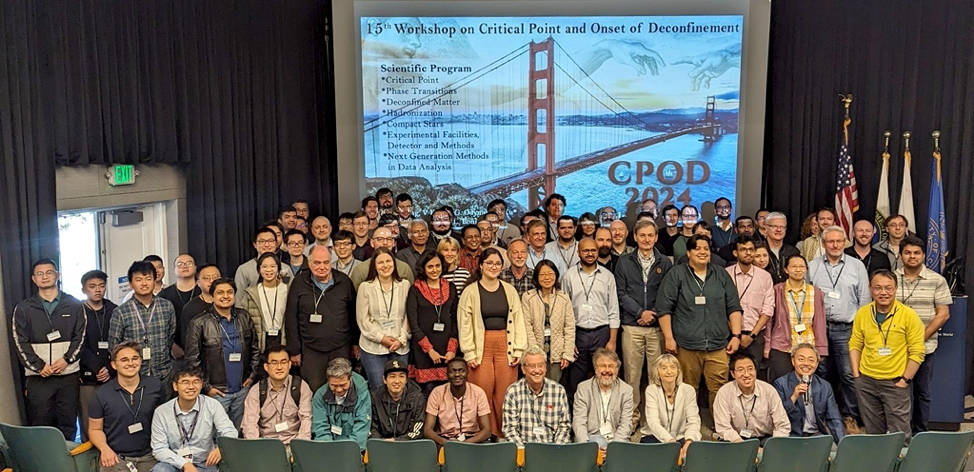In May, NSD hosted the 15th Workshop on Critical Point and Onset of Deconfinement (CPOD2024) at LBNL. CPOD is a series of international meetings which focus on the physics of the QCD phase structure in high-energy nuclear collisions, especially in the region of high baryon density where a possible phase transition and a critical point are conjectured to be located.
A total of 95 participants enjoyed an exciting scientific program that included experimental and theoretical topics. Many experimental results were reported by international collaborations including ALICE at CERN, HADES at GSI, SHIAN(NA61) at SPS and STAR at BNL. The STAR experiment released the awaited new results on higher moments of the proton and anti-proton distributions from the RHIC beam energy scan phase II. The proton(anti-proton) high order correlations are believed to be sensitive to the QCD critical point. At the center of collision energy of 20 GeV, the experiment observed a 4-5sigma deviation of the data from known non-critical model calculations. The data points to the change of structure of the medium created in the heavy-ion collisions. The new results have stimulated engaged discussions during the workshop and on the internet.
Theorists also presented predictions on the location of the QCD critical point. Calculations from Lattice Gauge Theory, Functional Method, Holographic and Thermodynamic approaches were presented and, interestingly, all results point to the high baryon density regions around the baryon chemical potential of mu_B ~ 600 MeV and the temperature of T ~ 100 MeV. Recent theoretical progress regarding the inner structure of compact stars and its relation to high-energy nuclear collisions are also discussed in the meeting.NSD scientists Xin Dong, Volker Koch, Grazyna Odynier, and Nu Xu were the local organizers of the workshop.
